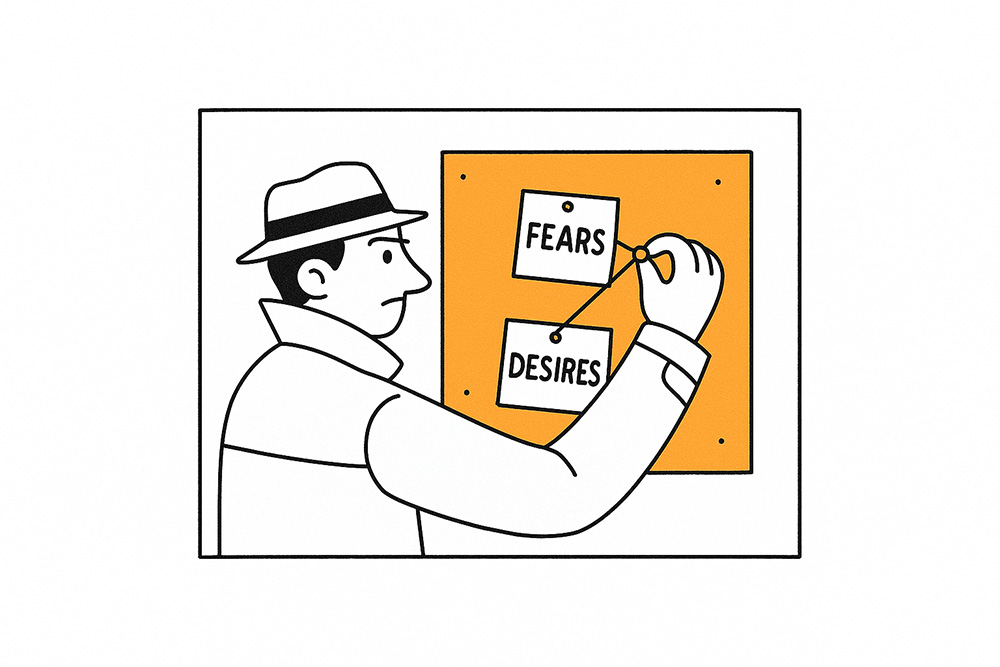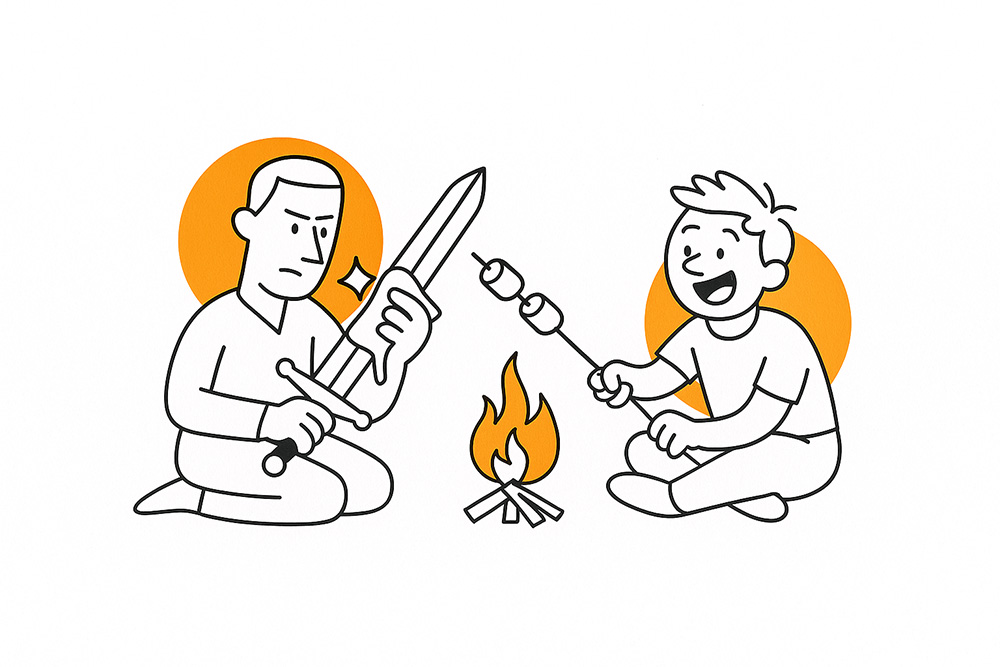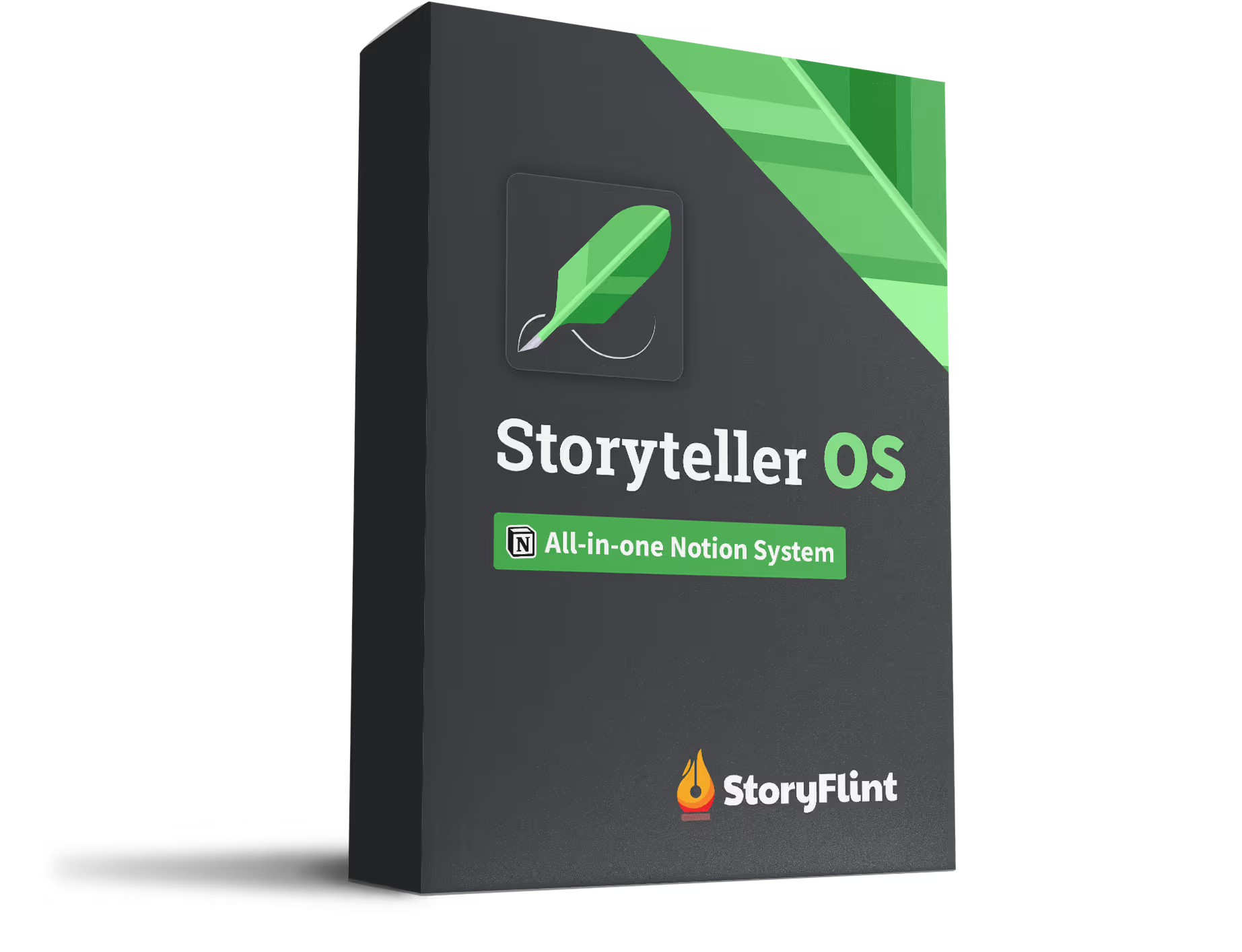If your characters feel like cardboard cutouts, it’s not because you can’t write. It’s because you don’t know what’s really driving them.
That’s where the Enneagram comes in: a personality framework that digs straight into a person’s fears, desires, and messy human contradictions. Forget flat archetypes. This is the cheat code for building characters that make your audience think, Wow… I know someone exactly like that.
Understanding the Enneagram and Why Writers Swear By It
If you’ve ever had a character feel “off” but couldn’t pinpoint why, the problem probably wasn’t the plot. It was the psychology.
The Enneagram isn’t just another personality quiz that tells you you’re a “creative dreamer who loves long walks and hates Mondays.” It’s a deep framework that explains why people do what they do.
Where most personality systems describe behavior, the Enneagram uncovers the motivation behind it. And for writers, motivation is the holy grail. A believable character isn’t built from quirks and snappy dialogue. It’s built from the inner engine that drives every decision they make.
When you understand your character’s Enneagram type, you’re not guessing how they’ll react in a scene. You already know what they fear, what they crave, and how they’ll sabotage themselves along the way.
The Nine Types at a Glance
Here’s the quick and dirty cheat sheet. Each type comes with a core fear, a core desire, and some defining traits:
- Type 1: The Reformer – Fears being wrong; wants to be good and right.
- Type 2: The Helper – Fears being unwanted; wants to feel loved.
- Type 3: The Achiever – Fears being worthless; wants to be valued.
- Type 4: The Individualist – Fears having no identity; wants significance.
- Type 5: The Investigator – Fears being helpless; wants competence.
- Type 6: The Loyalist – Fears being without support; wants security.
- Type 7: The Enthusiast – Fears being trapped in pain; wants satisfaction.
- Type 8: The Challenger – Fears being controlled; wants autonomy.
- Type 9: The Peacemaker – Fears conflict and fragmentation; wants peace.
These aren’t “boxes” for your characters. They’re starting points. You can blend in wings, instincts, and stress/growth patterns to make them as layered and messy as real humans.
Why It Works So Well for Character Development
Writers consistently say their biggest headaches are inconsistent characters, scattered story notes, and plot holes you could drive a truck throughWriter Pain Points and ….
The Enneagram cuts through that chaos by giving you:
- A built-in backstory wound (the childhood experience that shaped them).
- An internal lie (the false belief that drives their mistakes).
- A clear fear (what they’ll do anything to avoid).
- A false want (what they think will fix their problems).
- A real need (what will actually help them grow).
When you define those five elements, you stop guessing. Every plot beat starts to make sense because it’s rooted in what your character is already wired to do.
Building a Character Foundation with the Enneagram
Think of the Enneagram as your character’s DNA. Once you lock in their type, you’ve got the blueprint for how they’ll handle love, conflict, loss, and that awkward dinner scene where everyone’s lying but no one admits it.
The trick is to avoid treating the type as a label and instead use it as the engine that drives your story.
Step 1: Start with the Core Type
Pick the type that lines up with the story’s internal conflict. If your protagonist needs to learn to trust themselves, a Type 6 (The Loyalist) might be perfect. If they need to loosen their death grip on perfection, hello Type 1.
Don’t overthink this. You’re not picking a Hogwarts house. You’re picking the set of fears and desires that will fuel your character’s choices from page one.

Step 2: Define the Five Internal Anchors
For each type, figure out:
- The Wound – The defining hurt that shapes their worldview.
- The Lie – The false belief they’ve built their life around.
- The Fear – The one thing they’ll avoid at all costs.
- The Want – What they think will solve their problem.
- The Need – What will actually help them grow.
This combo is storytelling gold because it keeps your character consistent without feeling predictable. Even their bad decisions will make sense.
Step 3: Add Complexity with Wings and Instincts
If you stop at the core type, your characters will all start to feel same-y. That’s where wings and instinctual variants come in.
- Wings are the neighboring types that flavor their personality. A Type 4 with a 3 wing is more ambitious and image-conscious. A 4 with a 5 wing is more withdrawn and cerebral.
- Instincts determine how they prioritize their needs:
- Self-preservation (safety, comfort, stability)
- Social (status, group belonging)
- Sexual/one-to-one (deep personal connections)
Mixing core type, wing, and instinct gives you 27 possible character builds before you’ve even written dialogue.
Step 4: Map Their Stress and Growth Arcs
Each Enneagram type has a “stress” direction (how they act under pressure) and a “growth” direction (how they behave when thriving). This is a built-in arc you can weave into your plot.
For example, a Type 1 (Reformer) in growth borrows the playfulness of a Type 7, but in stress, they might fall into the melancholy of a Type 4. That’s character development you don’t have to invent—it’s already baked into the system.
Step 5: Build the Supporting Cast Intentionally
If you know your protagonist’s type, you can pick side characters that either challenge or complement them. A Type 1 protagonist with a Type 7 partner will get constant friction over rules vs. spontaneity. That’s chemistry you can write without forcing.

Step 6: Keep Their Core Fear in Sight
The moment you make your character do something wildly out of type just to move the plot, you’ve broken the audience’s trust. Before you write a scene, ask: Would their core fear allow this? If not, rewrite the motivation, not the character.
Rules and Essential Elements of Writing Enneagram Characters
The Enneagram works best when you treat it like a compass, not a cage. It’s there to point your characters toward believable behavior, not force them into stereotypes.
Here’s how to use it without making your audience roll their eyes.
1. Motivation Before Mannerisms
Don’t start with how your character acts. Start with why they act that way.
A Type 7 (The Enthusiast) might crack jokes in tense moments, but the real driver is their fear of being trapped in pain. That fear makes the humor land with emotional weight instead of feeling like cheap comic relief.
2. Show the Wound in Action
Every type has an emotional wound that shapes their worldview. You don’t have to spell it out in chapter one, but show how it colors their decisions.
If your Type 2 (The Helper) protagonist overextends themselves to win affection, let the audience see the exhaustion and resentment that piles up underneath the smiles.
3. Use Growth and Stress to Create Tension
An audience can spot a static character from a mile away. Track how your character shifts under pressure and in moments of victory. The Enneagram’s growth and stress points give you a natural push-pull that keeps their arc moving.
Example: In Iron Man, Tony Stark (Type 3) starts obsessed with image and achievement. Under stress, he defaults to arrogance and overwork. In growth, he learns to act with authenticity—even when no one’s watching.
4. Avoid the Stereotype Trap
Not all Type 8s are bossy CEOs. Not all Type 4s are moody artists. Healthy characters can surprise you, and unhealthy ones can surprise you in the worst way. Use the type as a foundation, then layer in history, culture, and personal quirks.
5. Let the Type Influence Relationships
The Enneagram isn’t just for protagonists. Knowing the types of your supporting cast lets you engineer conflicts and alliances without forcing them.
A Type 1 (Reformer) and Type 7 (Enthusiast) in a buddy-cop setup? Expect constant friction over rules versus fun. A Type 6 (Loyalist) and Type 8 (Challenger) in a rebellion plot? Built-in tension over trust and leadership.
6. Keep the Audience’s Trust
If you make your character break type just to move the plot along, your audience will feel it. A Type 5 (Investigator) suddenly rushing into danger without reason? That’s not growth—that’s a plot hole. When in doubt, ask: Would their core fear let them do this?
Famous Media Examples of Enneagram Characters Done Right
The easiest way to understand Enneagram characters is to see them in the wild. Let’s break down a few examples and how they follow the rules we just talked about.
Harry Potter Series
- Hermione Granger – Type 1 (Reformer)
Core fear: Being wrong or corrupt. Core desire: To be good and right.
We see her wound in action from book one—her need to be perfect often alienates her from peers. Growth moments happen when she trusts others and bends the rules for the greater good.
Rule in action: Shows the wound in action and uses growth/stress to drive her arc. - Harry Potter – Type 8 (Challenger)
Core fear: Being controlled or vulnerable to others. Core desire: Autonomy and self-determination.From his first days at Hogwarts, Harry resists anyone trying to dictate his path—whether it’s Dolores Umbridge’s rules or Voldemort’s threats. His loyalty to friends is fierce, but it’s paired with a deep refusal to let others decide his fate. His growth comes when he learns that accepting help doesn’t mean losing control.Rule in action: Motivation before mannerisms, with growth showing that strength and vulnerability can coexist. - Fred & George Weasley – Type 7 (Enthusiast)
Core fear: Being trapped in pain. Core desire: Joy and freedom.
Their humor isn’t just comic relief—it’s a coping mechanism in a war-torn world.
Rule in action: Avoids stereotype by making their fun-loving nature a survival tactic.
Marvel Cinematic Universe
- Tony Stark – Type 3 (Achiever)
Core fear: Being worthless without achievement. Core desire: To be valuable.
His arc from Iron Man to Endgame mirrors the growth direction of a Type 3—valuing authenticity over image.
Rule in action: Uses stress and growth for dynamic tension. - Loki – Type 4 (Individualist)
Core fear: Being insignificant. Core desire: Unique identity.
Every scheme, betrayal, and alliance is an attempt to prove his worth.
Rule in action: Shows the wound in action and lets the type influence relationships. - Shuri – Type 5 (Investigator)
Core fear: Being helpless. Core desire: Competence.
Her obsession with research and tech innovations comes from a fear of not being prepared to protect her people.
Rule in action: Motivation drives skillset, not the other way around.
Advanced Enneagram Techniques for Next-Level Character Writing
Once you’ve nailed down a character’s core type, you can layer in deeper Enneagram systems to make them feel less like a “type” and more like a whole person. These tools also help you craft more dynamic ensemble casts and believable relationship drama.
The Triads: Gut, Heart, and Head
The nine types are grouped into three triads, each dominated by a core emotional driver:
- Gut/Body Triad (Types 8, 9, 1) – Motivated by anger and autonomy.
- Heart/Feeling Triad (Types 2, 3, 4) – Motivated by shame and the need for attention.
- Head/Thinking Triad (Types 5, 6, 7) – Motivated by fear and the need for security.
Why this matters: Triads explain how your characters instinctively react to conflict before they have time to think about it.
Example: In The Avengers, when plans go sideways, Type 3 Tony Stark pushes for a high-profile, results-driven solution, while Type 5 Bruce Banner quietly analyzes every variable, and Type 8 Steve Rogers takes charge and confronts the problem head-on.
Hornevian Groups: Conflict Styles
These show how types approach obstacles:
- Assertive (3, 7, 8) – Push against the problem.
- Compliant (1, 2, 6) – Seek help or follow authority.
- Withdrawn (4, 5, 9) – Step back and work alone.
Putting two characters from different groups in the same crisis scene creates natural tension. A Withdrawn type stuck with an Assertive type? Instant sparks (and maybe murder threats).
Harmonic Groups: Coping Styles
Harmonic groups explain how types handle disappointment:
- Positive Outlook (2, 7, 9) – Stay optimistic, avoid negativity.
- Competency (1, 3, 5) – Focus on doing the right or efficient thing.
- Reactive (4, 6, 8) – Confront the problem emotionally and directly.
If your plot needs an explosive argument, mix Reactives with Positives. If you want a tense, quiet disagreement, put a Competency type with a Withdrawn type.
Levels of Development
Each type has nine “health levels” from healthy integration to unhealthy fixation. This gives you a slider for showing a character’s mental state shifting over time.
Example: A healthy Type 4 may be creative and self-aware, but slide them down the scale and they become moody, self-absorbed, and destructive. That’s an arc your audience will feel.
Bringing It All Together
The Enneagram isn’t just a way to make your characters “more interesting.” It’s a way to make them real. When you know their core fear, core desire, and the lies they believe about themselves, you stop writing plot devices and start writing people your audience can’t forget.
And here’s the bonus: it makes writing easier.
No more wondering how your protagonist will react under pressure. No more characters suddenly acting out of, well… character. The Enneagram gives you the guardrails so you can focus on telling a compelling story instead of patching holes in your cast’s behavior.
If you want a Notion-based system to map all this out without juggling messy docs and sticky notes, check out the Storyteller OS. It’s Character Work dashboard is built with the Enneagram in mind, so you can track wounds, fears, wants, needs all in one place.
Your story is already full of potential. The Enneagram just helps you shape it into something that sticks with your audience long after they’ve turned the last page.




